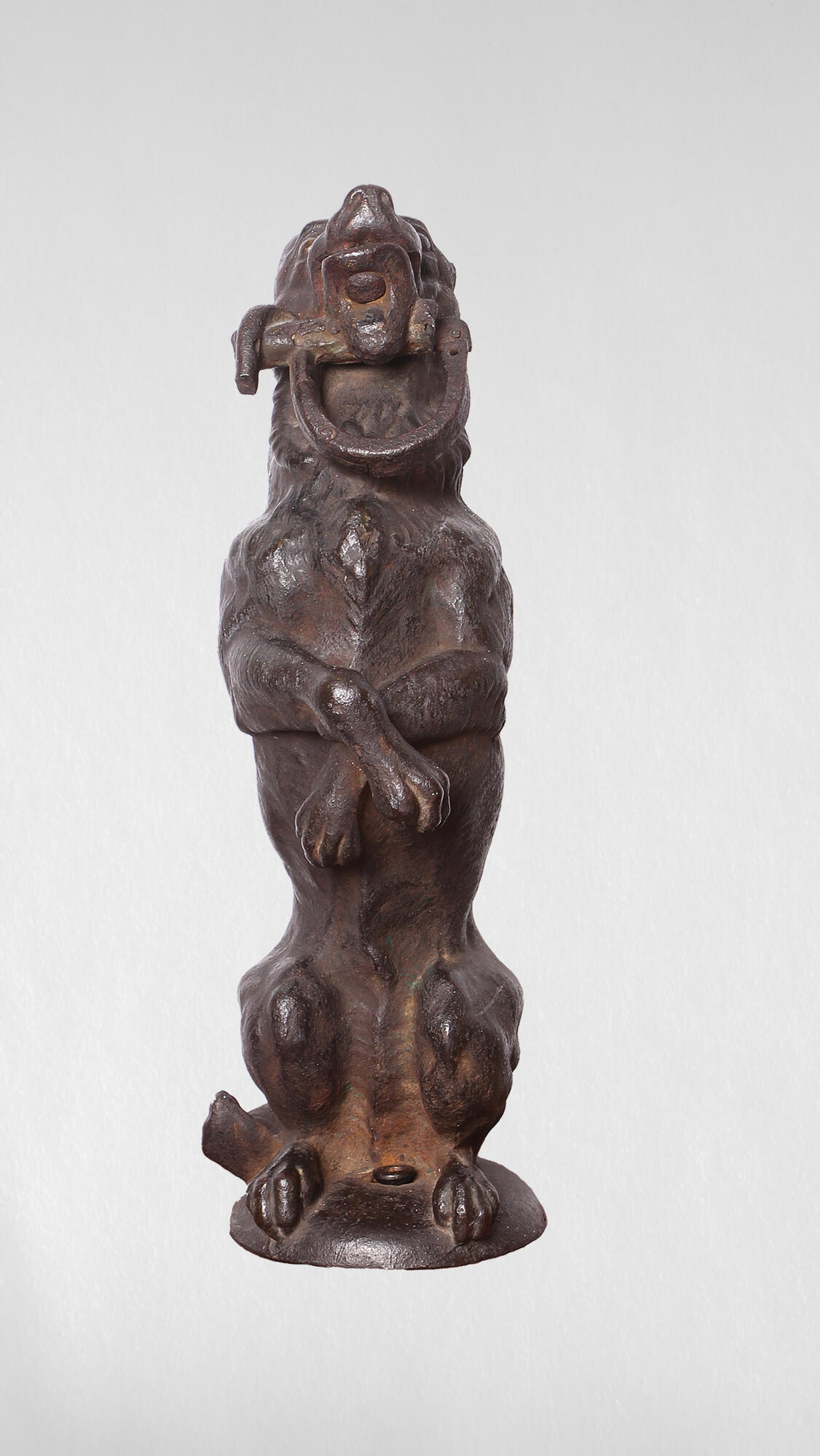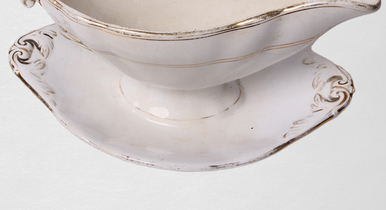The museum displays a cast-iron lock in the form of a dog. It is on its hind legs, with its forelegs up and crossed. The head is also raised as if the dog is looking up at its master. The dog’s upper jaw is fixed, and the lower jaw can be detached. The figurine is partially damaged: its ears have not been preserved. But the museum workers suppose that they were long. The dog is presumably a spaniel.
This lock made by the master Tsyden Nimayev is the analog of the item from the Buryat sculptor Serenkhav Boldano-tom’s collection.
Locks and keys appeared in ancient times. As soon as people had their property, they had to protect it. The latching mechanisms were invented almost simultaneously in the West and East. They were made of various materials and differed by ways of locking and unlocking.
The first iron locks were divided into two main types. Padlocks were used during the trips to lock the luggage in a chest or a drawer. Rim locks were attached to the surface of a door.
Padlocks were very popular. The merchants used them to protect their goods from robbers on trade routes, during sea and river journeys. They could be of various sizes — from tiny to giant ones. Locks were often made in the form of different figures, religious symbols, animals, fish, birds.
The most popular decorations were colored rolls and rims, as well as geometric patterns in the technique of dotted inlay. The masters also used hot engraving when they incised patterns or figures on the hot metal surface with chisels of various shapes. Some locks and keys became art pieces and symbolized the wealth of their owners.
As time went on, locks and keys changed and became more complex. To make them more reliable, the masters began to equip key blades with cuts, and locks — with arcs and semi-cylindrical parts with wards. Such mechanisms were called ‘secret cylinders.’ Only a key with a certain shape of bitting could pass through the keyhole and move the deadbolt.
This lock made by the master Tsyden Nimayev is the analog of the item from the Buryat sculptor Serenkhav Boldano-tom’s collection.
Locks and keys appeared in ancient times. As soon as people had their property, they had to protect it. The latching mechanisms were invented almost simultaneously in the West and East. They were made of various materials and differed by ways of locking and unlocking.
The first iron locks were divided into two main types. Padlocks were used during the trips to lock the luggage in a chest or a drawer. Rim locks were attached to the surface of a door.
Padlocks were very popular. The merchants used them to protect their goods from robbers on trade routes, during sea and river journeys. They could be of various sizes — from tiny to giant ones. Locks were often made in the form of different figures, religious symbols, animals, fish, birds.
The most popular decorations were colored rolls and rims, as well as geometric patterns in the technique of dotted inlay. The masters also used hot engraving when they incised patterns or figures on the hot metal surface with chisels of various shapes. Some locks and keys became art pieces and symbolized the wealth of their owners.
As time went on, locks and keys changed and became more complex. To make them more reliable, the masters began to equip key blades with cuts, and locks — with arcs and semi-cylindrical parts with wards. Such mechanisms were called ‘secret cylinders.’ Only a key with a certain shape of bitting could pass through the keyhole and move the deadbolt.



